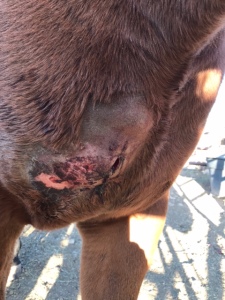There are a handful of inspiring quotes that circulate around the horse community, on bumper stickers, t-shirts, and Facebook posts. Surely you’ve heard many of them. How about, “The wind of Heaven is that which blows through a horse’s ears.” Or, “God forbid that I should go to any Heaven in which there are no horses.” Or my personal favorite, “There is something about the outside of a horse that is good for the inside of a man.” This quote is often credited to Winston Churchill, Ronald Reagan, and Will Rogers. I don’t care who said it because I’ve always believed that the outside of a horse is good for the inside of a man, a woman, and especially a child!
As a lifelong sufferer of “equine insanity” I’ve been horse crazy for as long as I can remember. I can share story after story of the benefits of human/horse interactions. But my experiences really have no scientific evidence to prove the benefits of these interactions. However, there have been studies conducted supporting the claim that the outsides of horses are good for the insides of people.
A study conducted by Washington State University looked at the effects of Equine Facilitated Learning on stress levels. This study was conducted with students in grades 5-8 who participated in weekly riding lessons for 12 weeks. Working with horses may cause more stress than usual. Imagine standing in front of a 1,200 pound animal that has the potential to seriously injure you. This study was conducted to see if working with horses could lower stress levels throughout the day for theses children. It was found that after working with horses 12 weeks, stress levels were lower throughout the day.
Another study conducted by the University of Illinois looked at the benefits of Autistic children working with horses. Over time subjects showed an increase in self-awareness and volition. This study showed that an increase in these traits may be an underrecognized benefit of working with horses. Finally, a study conducted by the University of North Texas looked at the benefits of at-risk children and adolescents working with horses. After working with the horses, these at risk individuals had an increase in positive behaviors and a decrease in negative behaviors.
As you can see, horses, like dogs, cats, and other therapy animals, can have a huge impact on people. I know it’s true and if you’re a horse person you know it’s true. But now there are more and more studies proving the claim that horses are good for people. Please join me by adding a bumper sticker, t-shirt, or Facebook post to remind the world that there is something about the outside of a horse that is good for the inside of everyone!

For more information on Equine Assisted Therapy check out these websites:




